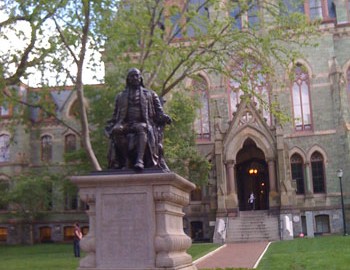Supreme Court: Affirmative Action Remains a Factor in Admissions
In several recent posts, we’ve noted that the difference between being granted or denied admission by a top-tier institution is often a subtle distinction, which may be based on “soft factors.” Soft factors include not only those nonacademic parts of your application like essays, interviews, and recommendations, but also aspects of yourself as a person. In general, we refer to these factors as “hooks.”
Hooks include a talent or skill that you have developed that distinguishes you from other applicants. For example, your hook may be that you’re an excellent oboist when the school orchestra happens to needs one, an all-state linebacker sought by a coach , or a published poet applying to a school that has found that it graduates plenty of software engineers but not enough poets. In such cases, the school’s search for diversity will encourage them to select you over other applicants that have equal or even slightly better academic qualifications than you have.
However, there’s another kind of hook, one that you may possess due to your status as a member of an underrepresented minority group. In order to assemble a student population that satisfies an institution’s diversity goals, the admissions office may choose to admit you over other applicants. This is affirmative action as applied in post-secondary education.
Recently, in Fisher v. University of Texas, the U.S. Supreme Court upheld the ability of colleges and universities to use affirmative action as a factor in admissions. Justice Kennedy, in his majority opinion, wrote, “Enrolling a diverse student body promotes cross-racial understanding, helps to break down racial stereotypes, and enables students to better understand persons of different races.” These statements will hold true indefinitely. As a result, the Fisher decision strengthens previous precedents that established that race-conscious admissions policies are constitutional.
It should be noted, however, that the scope of affirmative action remains constrained even after the Fisher decision. The Court’s 1978 decision in Regents of the University of California v. Bakke declared racial quotas to be illegal but allowed race to be used as a factor in creating a diverse student body. The Bakke decision ended the use of affirmative action as a direct constitutional remedy for righting historical wrongs. The Court ended an opportunity to instruct Americans on the history of racial discrimination and its human consequences as well as the advantages to be gained by rectifying it. The Bakke decision made clear to colleges that their desire to create a diverse student body was the only constitutional means of using race as a factor in admissions. Last week’s Fisher decision safeguards this limited scope for affirmative action.
Fisher makes clear that colleges continue to have legal obligations regarding race-favoring admissions policies. Rather than generalizing, colleges must state specific reasons for their pursuit of diversity. They are advised to form panels to research why their specific reasons are vital to their ability to achieve diversity within their missions as educators. Colleges also need to periodically reassess their admissions policies so that they continue to be viable under the law.
The Fisher decision benefits admissions officers because they can now be confident in the knowledge that they may use race as one among many admissions factors. American institutions of higher learning are now better able to achieve diversity and they and the nation at large will be better off for it. In conforming their admissions policies with the Fisher decision, colleges and universities, especially the most elite among them, can continue to lead the way for Americans to understand the awful and unresolved history from which affirmative action was born.





